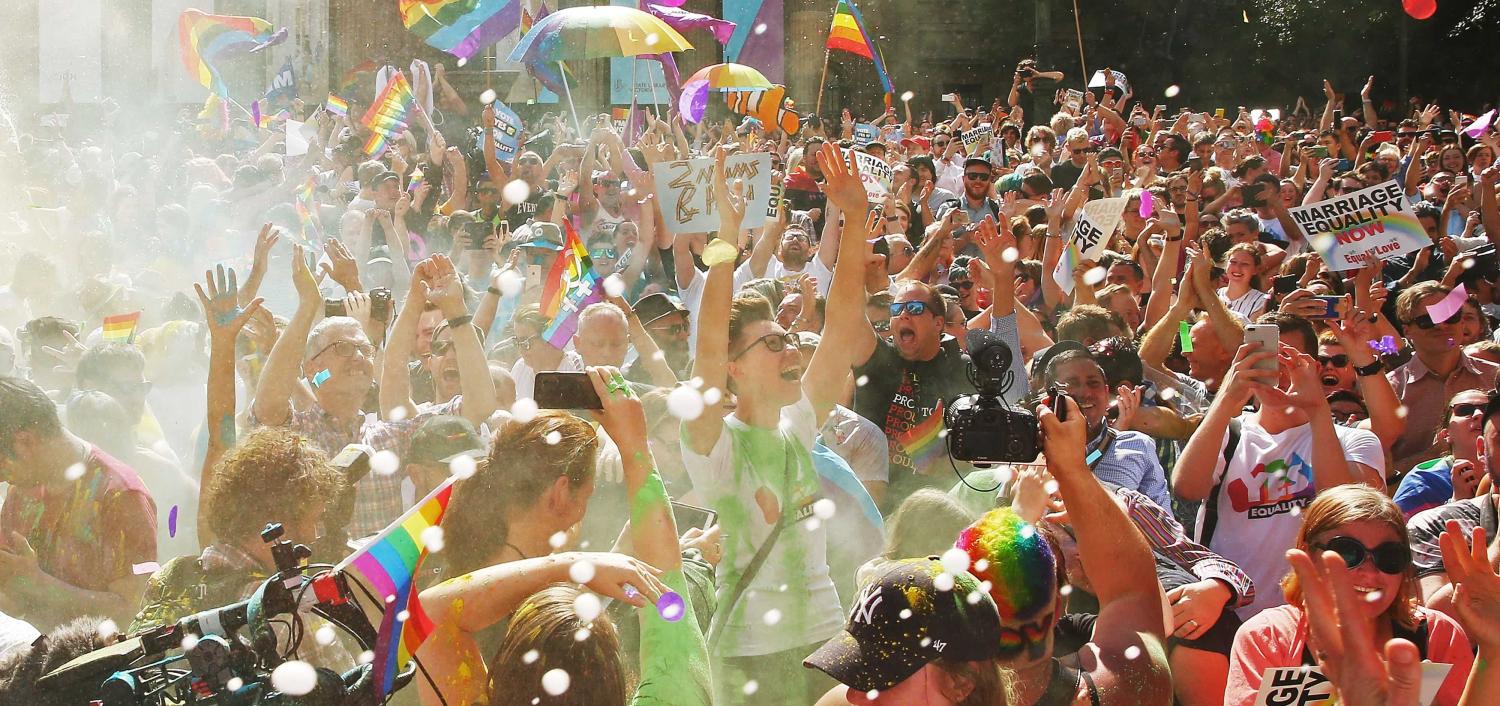The same-sex marriage survey, or the Australian Marriage Law Postal Survey as the Australian Bureau of Statistics framed it, is finally done. The result – 61.6 % for, 38.4% against – is a strong one; at 1.604:1, it’s eerily similar to the golden ratio or ‘divine proportion’ in mathematics, architecture and science of 1.618. For someone who loves numbers, that’s a poetic end to a divisive and for some, very painful, process.
Of the many criticisms that have been levelled at the survey, my own included, the survey methodology was a central problem. It was not a vote in the way of Australian election voting. It was not compulsory and lasted a torturous 83 days from when the first surveys were posted to the outcome, leaving the entire process open to the reproach that any result could not accurately be said to be representative of national sentiment. The ABS wisely refrained from calling it a plebiscite, presumably on the basis that the postal method and voluntary nature meant that in a scientific sense it could not purport to be a true plebiscite.
Yet the response rate for the marriage survey was very high at 12,728 million of the eligible ‘universe’ of 16,006 million Australians; just 0.5 points shy of 80%. As a comparison point, the turnout rate at the last federal election was 91%.
A voluntary survey risked not capturing the views of young people. It’s hard to entice younger people to vote, even in compulsory elections. At the last federal election, the voting rate among eligible 18-19 year olds (taking into account their low enrolment rate) was low at around 66%, climbing to around 80% for 30 year-olds. This compares with the much higher rate of over 90% for those aged over 60.
Compounding this was the postal element. I’ve known 18 year olds who’ve never written a letter, never mind finding a letter box. Their elders had no problem with that of course, with almost nine in ten (89.6%) 70-74 year-olds responding to the same-sex marriage survey.
Yet the younger age groups did take part, despite those obstacles. The participation rate of 18-19 year olds – 78.2% - was almost as high as that of the whole population, 79.5%. The participation rate among Gen Y’s (18-34 year-olds) was above 75% overall.
Then there is the issue of accuracy. For once, the pollsters got it pretty much right.
There has been much consternation at recent failures of polling to predict the results of elections. The 2016 US presidential election, the Brexit vote, the 2015 UK election and the Scottish independence referendum all highlighted the vulnerability of a long-standing methodology which was somehow missing the ‘shy Tory’/’shy Trump’/’shy [insert appropriate political persuasion]’ effect. The ‘shy voter’ is, the theory goes, ashamed or wary of admitting to a conservative or ‘politically incorrect’ view.
Attempts to predict the Marriage Law survey result ran the same risk. People responding to newspaper polls during the voting period might be wary of admitting they had responded ‘no’. One team of university researchers used data analytics to predict a narrow ‘no’ result, despite the mainstream news outlet surveys indicating the opposite.
However, external polling done throughout the survey by various organisations fairly accurately predicted both the result and the turnout. Newspoll had the ‘yes’ vote at 58% last week with a 2.5% error margin, Essential Poll had it at 64% a few days earlier. Newspoll almost exactly predicted the final turnout at 79%.
Meanwhile, the wide margin of 23.2 points between the ‘yes’ and ‘no’ vote in the marriage survey is one that Australia’s mainstream political parties could only dream of in a national vote. And with its 79.5% turnout, the voluntary marriage survey very nearly matched that of the last federal election, even with its compulsory element. If you factor in the informal vote of 5% at the 2016 election, the proportion of voters participating in the marriage survey fell only 6 points short of our last compulsory election.
That makes the result very hard to argue with.

